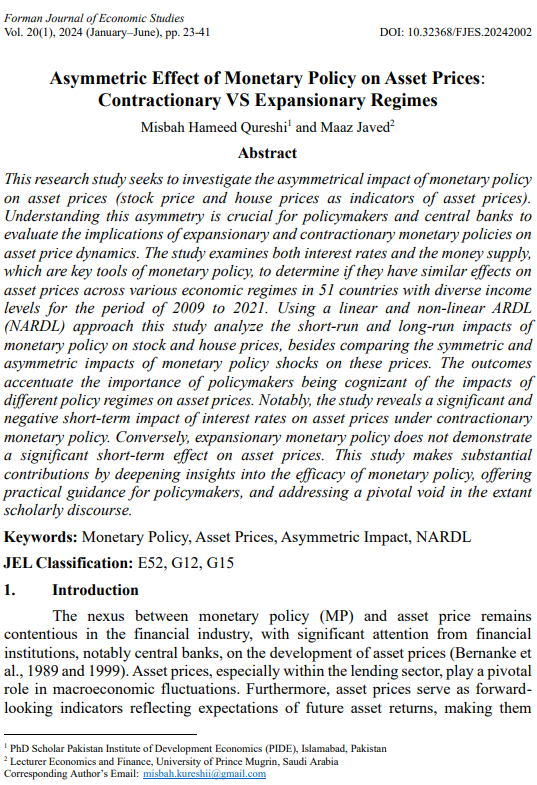Asymmetric Effect of Monetary Policy on Asset Prices: Contractionary VS Expansionary Regimes
Keywords:
Monetary Policy, Asset Prices, Asymmetric Impact, NARDLAbstract
This research study seeks to investigate the asymmetrical impact of monetary policy on asset prices (stock price and house prices as indicators of asset prices). Understanding this asymmetry is crucial for policymakers and central banks to evaluate the implications of expansionary and contractionary monetary policies on asset price dynamics. The study examines both interest rates and the money supply, which are key tools of monetary policy, to determine if they have similar effects on asset prices across various economic regimes in 51 countries with diverse income levels for the period of 2009 to 2021. Using a linear and non-linear ARDL (NARDL) approach this study analyze the short-run and long-run impacts of monetary policy on stock and house prices, besides comparing the symmetric and asymmetric impacts of monetary policy shocks on these prices. The outcomes accentuate the importance of policymakers being cognizant of the impacts of different policy regimes on asset prices. Notably, the study reveals a significant and negative short-term impact of interest rates on asset prices under contractionary monetary policy. Conversely, expansionary monetary policy does not demonstrate a significant short-term effect on asset prices. This study makes substantial contributions by deepening insights into the efficacy of monetary policy, offering practical guidance for policymakers, and addressing a pivotal void in the extant scholarly discourse.





